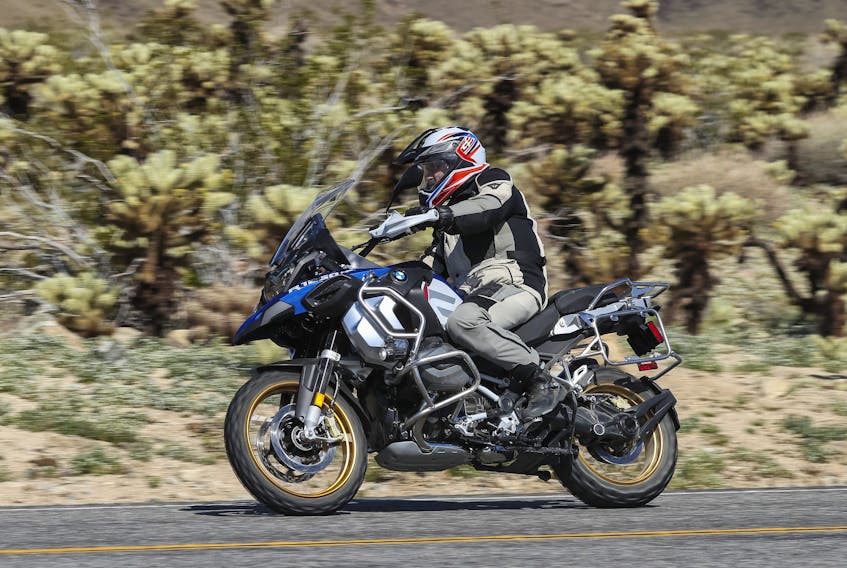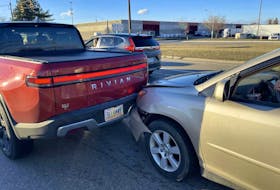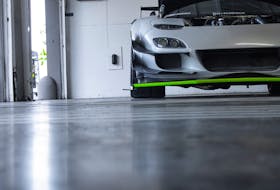DAVID BOOTH
In Santa Barbara, California — Not so very long ago — OK, not so very long ago if you’re 62 years old — BMW flat twins were plodding, though reliable, water pumps, er, internal combustion engines. Decidedly retro-tech with incredible long pushrods and but two valves in an old style hemispherical combustion chamber, you were lucky to get 6,000 rpm or 60 horsepower out of the hoary old beasts. They might run forever, but they also might bore you to death doing it. Whether that was compliment or insult depended very much on where you stand on the line between Neil Diamond and Elton John. And, if you don’t understand how big a chasm there is between boring and reliable, please Google Diamond’s schmaltzy version of Elton’s Rocket Man.
What a stonking engine
No more. In the last three decades, BMW’s Boxer has gained, in rough order, fuel injection, oil cooling, then water cooling, overhead cams, variable valve timing and a s**t-load of displacement. What was once an air-cooled, overhead valve 980cc with moderate (in the extreme!) performance is now a high-revving, DOHC, ShiftCammed fire-breather with 136 horsepower. Oh, there’s still a ton of low-end grunt — huge 102-millimetre pistons running through an almost-as-humongous 76-mm stroke will do that for you — but when older flat twins were just starting to sound reluctant (around 5,000 rpm), the new ShiftCam engine feels like it grows a second set of camshafts. In fact, the new high-tech engine is doing exactly that, ShiftCam being BMW Motorrad’s moniker for VVT technology.
It takes some getting used to. You see, the Boxer’s trademark quaking under acceleration is still there, as is its tractor-like grunt. It even sounds (reasonably) like Boxers of old. So, if you’ve been trundling along for a while without lighting a fire in its combustion chambers, it can be a surprise when WFO on the R 1250 GS feels, well, a little superbike-ish.
It’s impressive stuff. Oh, it’s not KTM 1290 impressive, but seriously, if you really do need the KTM’s 25 extra ponies — in a bike that is designed for adventure and touring, mind you — maybe it’s time you re-evaluate exactly how fast you need to tour or adventure. It’s a stonking great engine and by far the best Boxer motor BMW has ever produced.
Sweet on-road handling

Almost as amazing as the engine in how far BMW technology has come is the R 1250’s handling. Again, youngsters won’t remember this, but at one point in time, BMW was adamant that suspension adjustability was the work of the devil. While Asian marques took baby steps towards offering damping adjustability — typically only rebound and, even then, on only their top-flight superbikes — BMW claimed that letting owners adjust their own shocks and forks would result in calamity: “People are just too stupid to let them adjust suspension,” one high-level spokesman once told me.
Fast forward, again 30 years, and BMW is the leader in such electronic trickery, its Dynamic ESA (for Electronic Suspension Adjustment) at the forefront of rider-controlled suspension. Choose a mode — Rain, Road or Dynamic — and the ESA system sets compression and rebound damping to suit. Ditto for rear spring preload; ladle on the baggage and passengers all you like, the R 1250 GS compensates for it.
The end result is a motorcycle that can be at one moment soft and glidey and the next taut and precise. That it happens to look like a dirt bike and shines so well on hard tarmac is emblematic of the oxymoron that adventure-touring riders long ago learned to dismiss.
However, the downside of all this high-techery is that the latest GS is…
A bit of a porker
If the GS was once slow and backward, it was also, despite being shaft-driven, comparatively light, simplicity being its own virtue when it comes minimizing avoirdupois.
With all its newfound complexity, however, lightweight is the last word to describe the modern R 1250. Water-cooling, antilock brakes and the copious electronic controls have all conspired to have the curb weight of a $21,650 2020 GS right around 249 kilograms. Quite the porker, indeed; that’s some 16 kilograms more than my comparatively simple — therefore lightweight — Suzuki V-Strom 1000. Make your GS a topflight Adventure model ($24,050) and the darn thing weighs 268 kilos. Fill up its 30-litre gas tank and it becomes a top-heavy porker.
What that means is that, despite incredible suspension and a relatively low centre of gravity, the latest GS — which gained another five kilos in transformation from 1200 to 1250 — is a tough go off-road. Oh, sure if you’re a six-foot-six German enduro champion — or the truly incredible GS Trophy racer, Jocelin Snow, who at five-foot-one is nothing less than the modern reincarnation of Gaston Rahier — the GS is simply too heavy for serious off-road work. We found that out at the 1250 GS’s press preview where less than half the motojournalists — a group presumably a little more capable than your typical BMW customer — failed to finish the off-road course laid out for us.
Weight is the biggest enemy of off-road prowess and of this I am sure. The 2020 R1250GS is technologically superior in every way to something like my comparatively crude DL1000. But given the same tires, anyone short of a licensed expert will find the Suzuki far more accommodating off-road than the Bimmer.
Indeed, I suspect that, going forward, BMW’s biggest challenge will be how to get some of that weight out of its top-selling motorcycle. If you’re looking for a reason to not buy a R1250GS, this obesity issue is it.
Accessories make the difference

As good as all this sounds, save perhaps the avoirdupois I mentioned, it is hardly unique. KTM and, more recently, Ducati have eaten away at the GS’s once insurmountable advantage in adventure touring. Both offer comfortable, competent, light weight and even more powerful alternatives. But where BMW still excels, where its advantage is still (almost) as large as it once was, is in the proliferation and quality of its accessories.
BMW’s accessory doo-dads are a righteous combination of plug-n-play interchangeability and over-the-top engineering. Everything from dashboard-mounted GPS systems to kits that raise and lower seat height to accommodate a wide range of different-statured riders, the attention to detail is impeccable. Oh, there are exceptions — the base plastic saddlebags offered for the GS are a tad flimsy and Mickey Mouse — but, in most cases, BMW’s ‘accessories’ feel like built-in features. If you’re a loyal BMW Motorrad believer — and yes, I know your numbers are legion — desperately looking for that one attribute that still sets Bayerische Motoren Werke above the rest, look no further. Other manufacturers’ motorcycles may be eating into BMW’s lead in the adventure market, but their accessories — with a possible exception of Triumph — are not.
In the end, BMW’s big GS remains the most successful Adventure motorcycle on the planet, mainly because it really can be all things — tourer, sport bike, and, if you’re big boned or particularly adept, off-roader — to all people. In the 1250, BMW has shored up (most of) its weaknesses while maintaining its strengths. Even its pricing, once outlandish, is becoming more the norm after more manufacturers start chasing the high-end Adventurer market. They have a long way to go to catch up.









